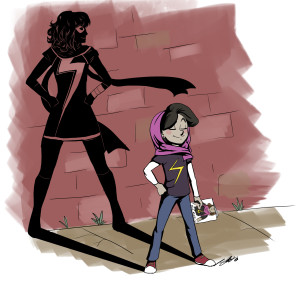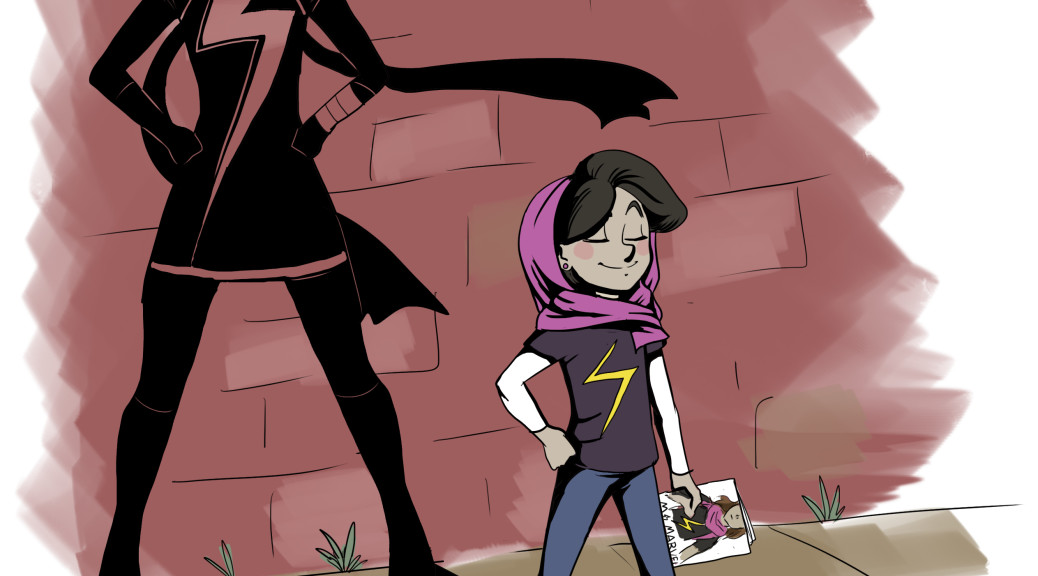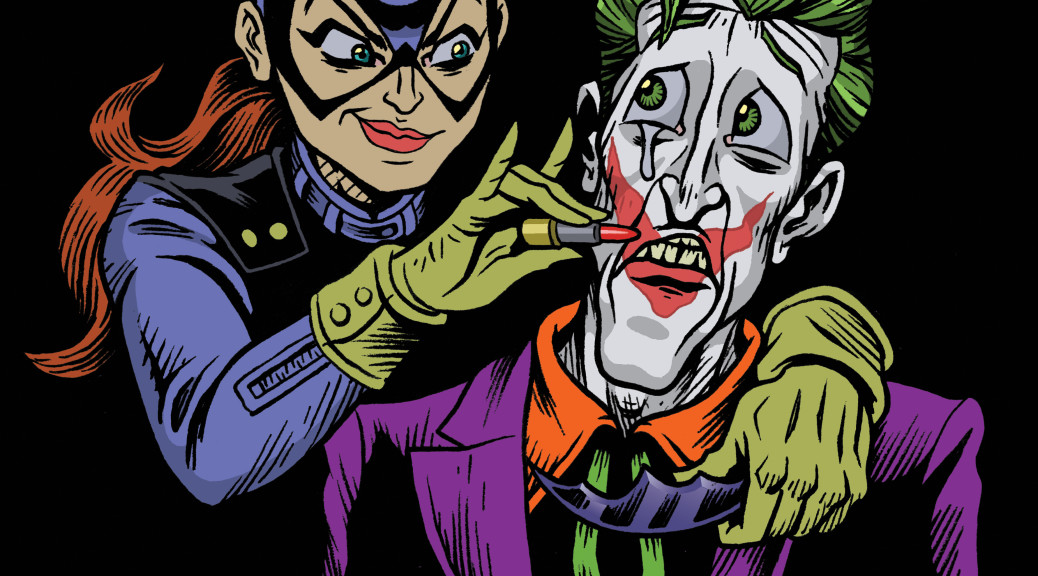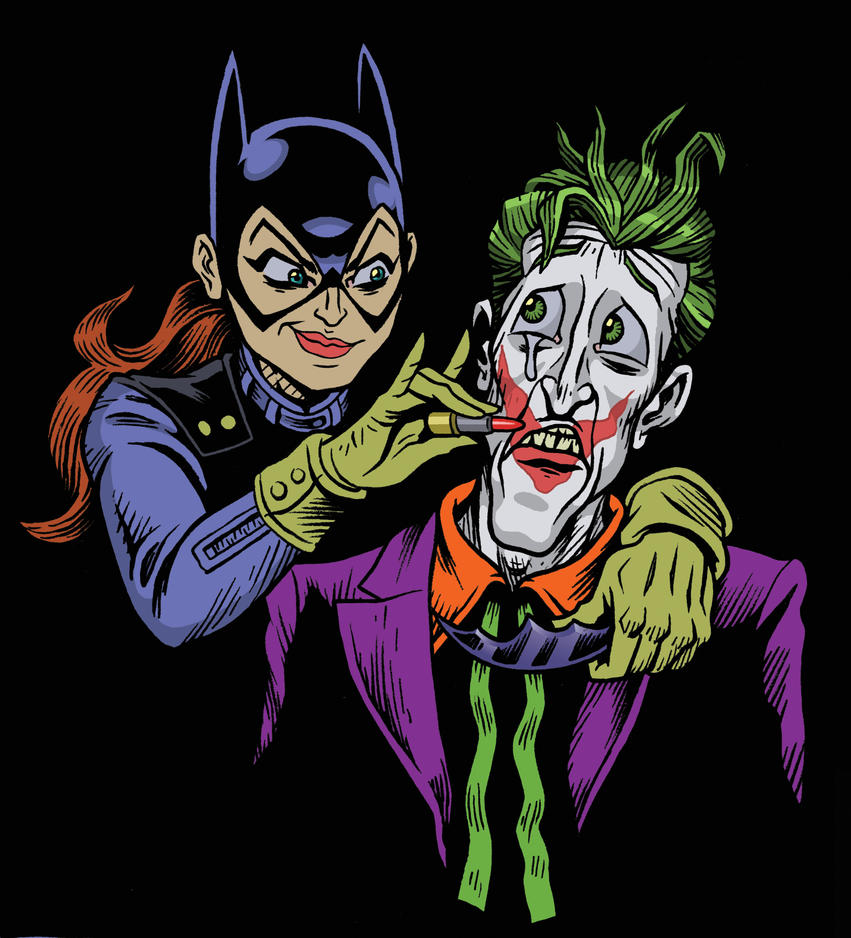The following announcement has been released and authorized for republishing and redistribution. Please feel free to copy the content below, link to this posting, or share this PDF of the Call for Papers:

Call for Papers
Muslim Superheroes: Comics, Islam, and Representation
Editors: A. David Lewis and Martin Lund
Now accepting chapter proposals for new collection with established publisher interest!
Despite turning a rather blind eye to them through much of the twentieth century, major American comic book publishers like Marvel Comics and DC Comics have featured, in the twenty-first century, numerous Muslim superhero characters, with the seeming intention to diversify their fictional universes and to provide corrective representations of Muslims in a cultural moment when stereotype and vilification of Muslims and Islam is particularly rife. The most recent example is Marvel’s Kamala Khan (Ms. Marvel, Feb. 2014). Although it might be easy to dismiss Ms. Marvel as something peripheral, she was discussed in various mainstream media long before her first appearance. High praise was expressed by Muslims and non-Muslims who thought the character could help “normalize” Muslims in American eyes while vehement opposition was voiced by critics who regarded her as “appeasement” of Muslims. As recently as January 2015, the character was plastered on anti-Muslim ads in San Francisco, illustrating the cultural power such characters can attain. It seems clear that, today, Muslim superheroes and Islam in comic books, more generally matter greatly to a large number of Muslims and non-Muslims alike.
Of course, Muslim superheroes are not restricted to the post-9/11 years, to the major superhero publishers, nor to the United States. There have been limited examples of Muslim superheroes in American superhero comics since their so-called “Golden Age.” And, smaller American publishers have created characters like Buraaq and the Silver Scorpion. More importantly, in recent years a steady stream of successful Muslim superhero comics has been emerging from Islamic contexts, ranging from the now multinational The 99 to the activist webcomic Qahera, much of which has also met with both approval and condemnation at home and abroad.
However, neither the historical precedents for the most recent American characters nor the contemporary diversity among Muslim superheroes is widely known. Although the Muslim superhero is becoming an increasingly important cultural phenomenon, it is still understudied and ill-understood, as is the representation of Islam in comics generally. Therefore, we are now looking for chapter proposals for the edited volume Muslim Superheroes. Through a series of close readings, this collection will study how Muslim and non-Muslim comics creators and critics have produced, reproduced, and represented different conceptions of Islam and Muslimness, embodied in superhero comics characters specifically and comic book protagonists more generally.
The purpose of the collection is threefold. First, it will assemble studies of a variety of comics characters and, thus, begin to outline the long history and diversity of Muslim superheroes. Second, it will attempt to answer some basic questions about these characters: why do Muslim superheroes keep being created?; what purposes do they serve?; how do they succeed (and how do they fail) in performing their assigned duties as signifiers of one conception of Islam or another? Third, it sets out to consider the extent of the impact Muslim superheroes have and will continue to have on both the genre and its audiences today. Possible topics for proposals include, but are not limited to:
- Muslim superheroes in Marvel or DC comics in a specific period (“Golden Age,” “Silver Age,” “Bronze Age,” post-9/11)
- Close readings of specific characters from other publishers (e. g. Buraaq, Silver Scorpion, Qahera, The 99)
- Reception (positive and negative), consumption, and uses of Muslim superheroes
- Translation and transposition of American superheroes in Islamic contexts
Please send a short synopsis (no more than 150 words) of your chapter, a full abstract (no more than 800 words), as well as contact information, affiliation, and a short CV with publication list to a.lewis@mcphs.edu by April 30, 2015. Feel free to direct any questions to Martin Lund at p.martin.lund@gmail.com.
***
About the Editors
A. David Lewis is the co-editor of Graven Images: Religion in Comic Books and Graphic Novels (Bloomsbury) and Digital Death: Mortality and Beyond in the Online Age (Praeger). He holds a Ph.D. in Religious Studies from Boston University and is both an Executive Board Member of the Comics Studies Society and a founding member of Sacred & Sequential.
Martin Lund is a Swedish Research Council International Postdoc at Linnaeus University and Visiting Research Scholar at the Gotham Center for New York City History at the CUNY Graduate Center. He holds a Ph.D. in Jewish Studies from Lund University and is an editor of the Scandinavian Journal of Comic Art and a contributing member of Sacred & Sequential.





 Thus, with typical Marvel bombast,
Thus, with typical Marvel bombast,  As something of a rarity in comics publishing, the third issue of Nick Marino and Daniel Arruda Massa’s Holy F*ck hits the stands this week (March 11, 2015), mere days after the previous one. As always, Sacred and Sequential and I were kindly provided with a review copy. Continuing the story of Jesus, Satan, and the nun Maria’s quest to stop Zeus and Isis’ plot to cause nuclear devastation in order to inspire humanity to have faith in them (and a cadre of other old gods who have remained more or less peripheral throughout the series) once more, this issue shows the gods finally get their plan crowdfunded through the website Kickslammer.
As something of a rarity in comics publishing, the third issue of Nick Marino and Daniel Arruda Massa’s Holy F*ck hits the stands this week (March 11, 2015), mere days after the previous one. As always, Sacred and Sequential and I were kindly provided with a review copy. Continuing the story of Jesus, Satan, and the nun Maria’s quest to stop Zeus and Isis’ plot to cause nuclear devastation in order to inspire humanity to have faith in them (and a cadre of other old gods who have remained more or less peripheral throughout the series) once more, this issue shows the gods finally get their plan crowdfunded through the website Kickslammer.